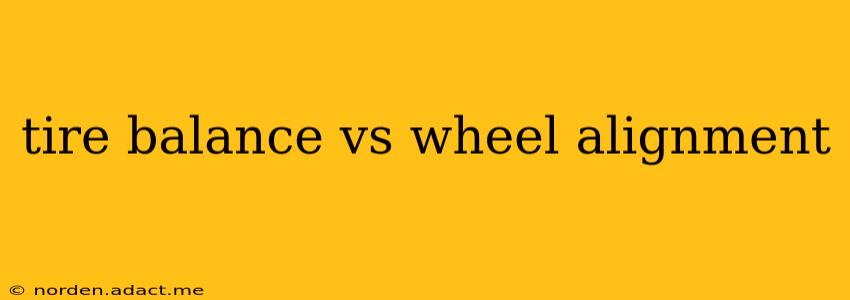Maintaining your vehicle's tires and wheels is crucial for safety, fuel efficiency, and a comfortable ride. Two essential services often get confused: tire balancing and wheel alignment. While both relate to your vehicle's handling and tire wear, they address different issues. This article will clarify the distinction between tire balancing and wheel alignment, helping you understand when each service is necessary.
What is Tire Balancing?
Tire balancing focuses on the distribution of weight around each wheel and tire assembly. An imbalance occurs when one part of the wheel and tire is heavier than others, causing vibrations at specific speeds. This imbalance isn't visible to the naked eye; specialized equipment is needed for precise measurement and correction.
Symptoms of imbalanced tires:
- Vibration in the steering wheel, especially at higher speeds.
- Shaking or wobbling in the car.
- Uneven tire wear.
- Premature tire wear.
How tire balancing works:
A technician uses a balancing machine to spin the wheel and identify the heavier point. Small weights are then added to the wheel's rim to counterbalance the weight discrepancy, ensuring smooth rotation. This process prevents vibrations and promotes even tire wear.
What is Wheel Alignment?
Wheel alignment, on the other hand, concerns the angle of your wheels relative to each other and the road. Proper alignment ensures your tires contact the road surface evenly, maximizing traction and minimizing wear. Misalignment can result from hitting a pothole, driving over rough terrain, or even a minor collision.
Symptoms of misaligned wheels:
- Vehicle pulling to one side.
- Uneven tire wear (often one side of the tire wears faster).
- Difficulty steering.
- Reduced fuel efficiency.
- Premature tire wear.
How wheel alignment works:
A technician uses specialized equipment to measure the angles of your wheels. Adjustments are then made to the suspension components (tie rods, caster, camber, and toe) to bring the wheels within the manufacturer's specifications. This process corrects the angles, optimizing tire contact with the road.
Tire Balancing vs. Wheel Alignment: Key Differences Summarized
| Feature | Tire Balancing | Wheel Alignment |
|---|---|---|
| Focus | Weight distribution around the wheel | Angle of wheels relative to each other & road |
| Cause of Issue | Manufacturing imperfections, uneven wear | Impact, wear and tear of suspension components |
| Symptoms | Vibrations, uneven wear | Pulling, uneven wear, difficult steering |
| Correction | Adding weights to the wheel rim | Adjusting suspension components |
How Often Should I Get My Tires Balanced and Aligned?
The frequency depends on several factors, including driving habits, road conditions, and the type of vehicle. As a general guideline:
-
Tire Balancing: It's recommended to have your tires balanced at least once a year, or whenever you notice vibrations. New tires should always be balanced.
-
Wheel Alignment: An alignment check should be performed every 6-12 months, or sooner if you notice any of the symptoms mentioned above. Consider getting an alignment after hitting a pothole or experiencing a jarring impact.
What if I only need one service?
You might only need one service at a time. For instance, you could experience vibrations due to imbalanced tires while your wheel alignment remains perfectly fine. Conversely, you could have perfect tire balance but experience a pull to one side due to misaligned wheels. A qualified mechanic can diagnose the issue and recommend the appropriate service.
Can I do tire balancing and wheel alignment myself?
While some DIY enthusiasts attempt to balance tires at home, it's generally not recommended. Precise balancing requires specialized equipment and expertise to ensure accuracy. Wheel alignment, involving intricate adjustments to the suspension, is even more complex and requires professional tools and knowledge. It's best to leave these tasks to trained professionals.
This comprehensive guide should help you understand the differences between tire balancing and wheel alignment. Remember, regular maintenance is key to ensuring your vehicle's safety, performance, and longevity.
